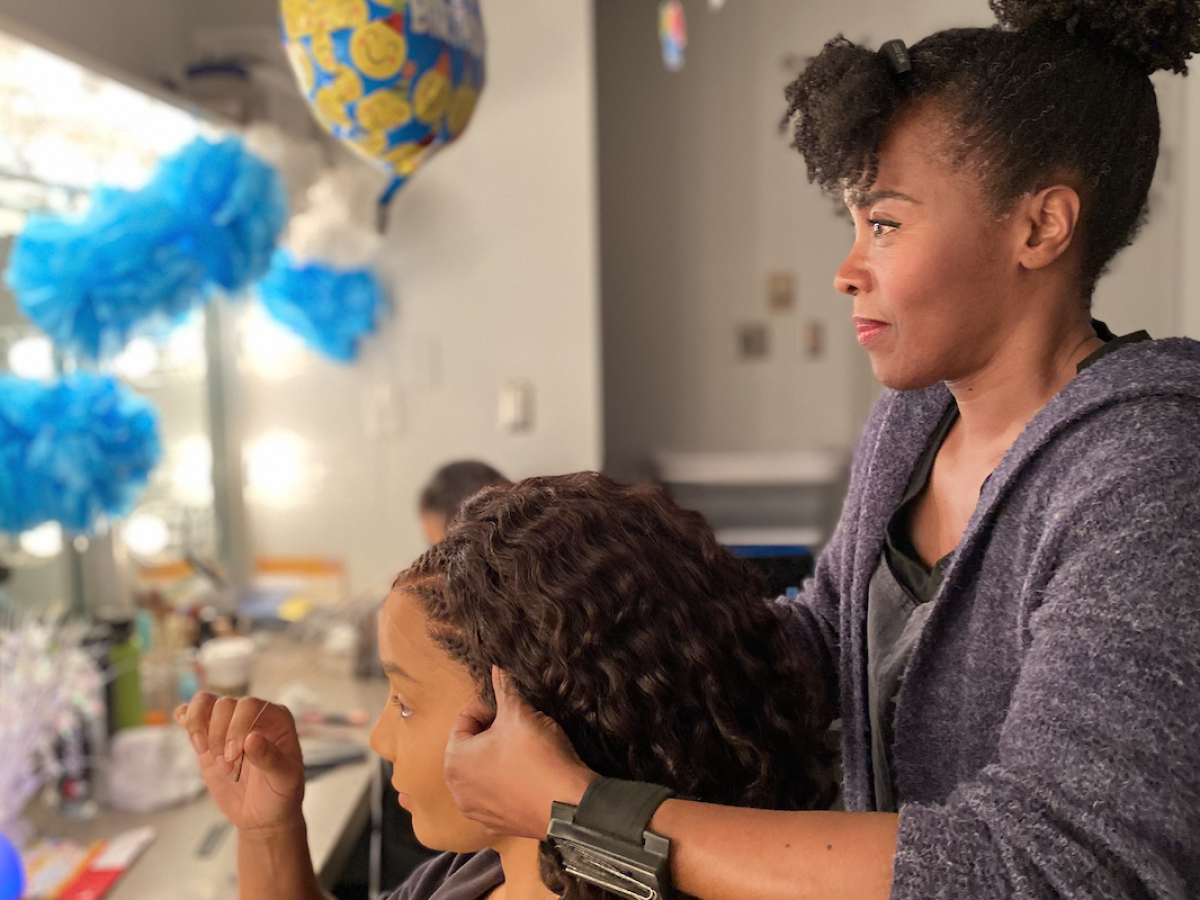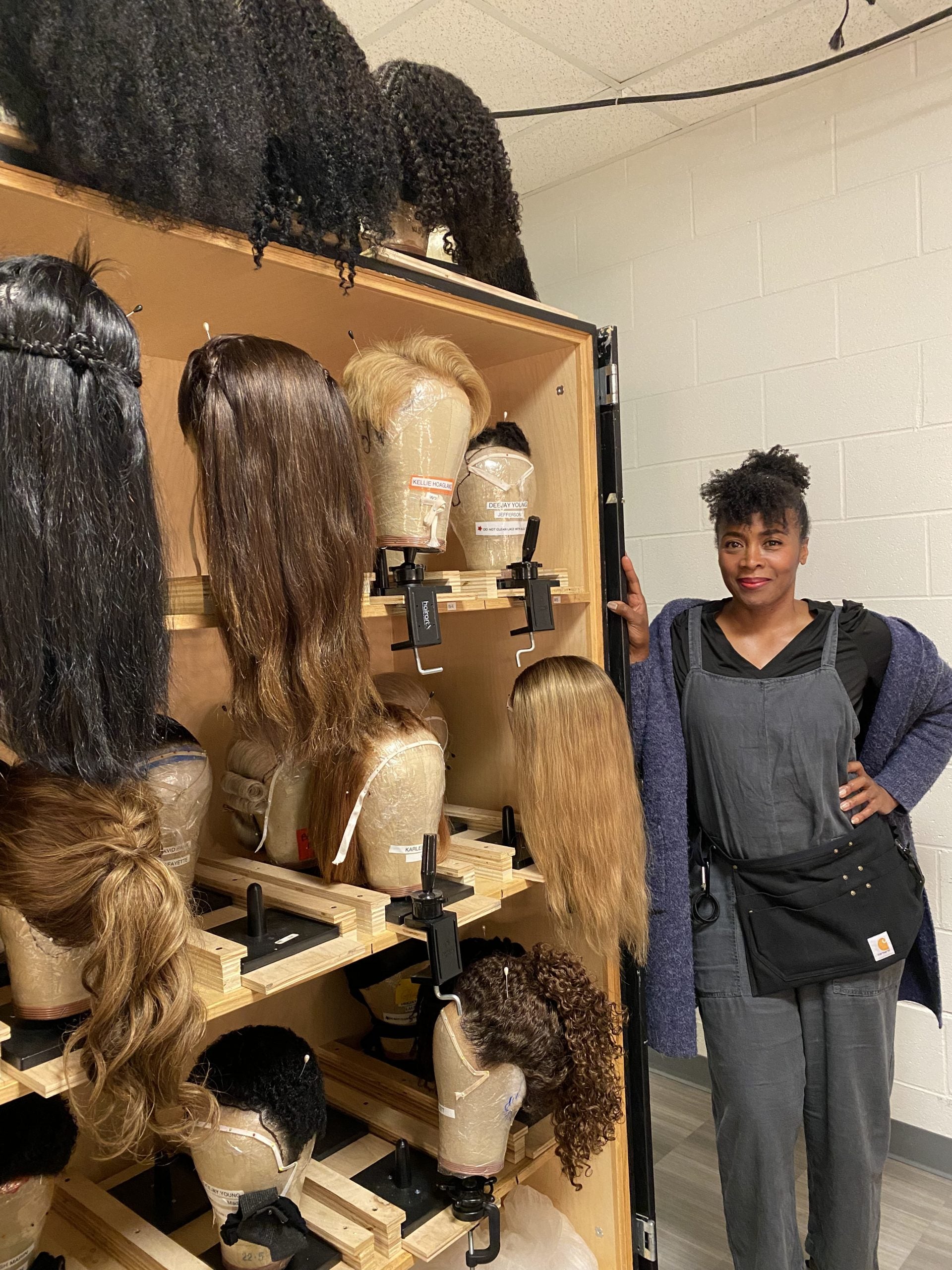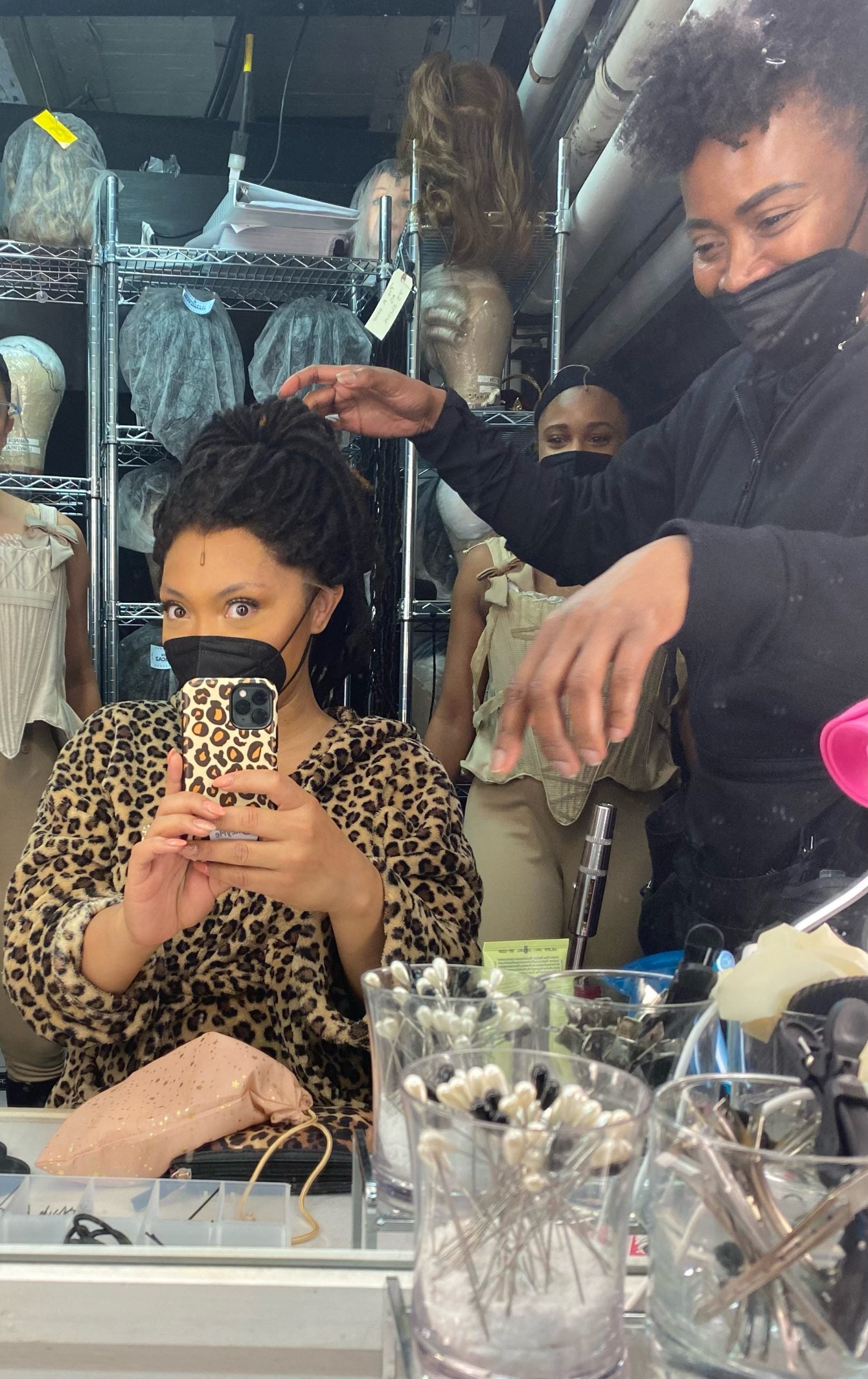
“When an actor gets into a wig that authentically represents them in texture and style, they get to bring another part of themselves into the character they are playing,” says Denise Farrell, the Hair and Wig Supervisor for Hamilton on Broadway.
With more than 30 years of experience in touring Broadway musical productions and theatrical plays, Denise has seen the stage change and evolve—and over time, the spotlight has grown to shine on more and more diverse actors and performances. So, when we knew we wanted to know what it’s like to see Black hair represented on the world’s biggest stage, we knew Denise was just the stylist to talk to.
Setting the Scene
“I believe that hair has such a big impact in our community,” Denise says. “Historically, to wear ‘your hair natural’ was a statement of Black pride and Black beauty, maybe even radical, going against society’s prejudiced belief that kinky/curly type hair was problematic, unruly, unkept unprofessional and unattractive.” She credits social media advocacy for permitting Black women to come out from hiding our hair under weaves, wigs, and extensions. And now she says it’s wonderful to see that reflected on the theatrical stage. “I feel proud to be working on a show with so much diversity and ethnicities,” she adds. “Earlier in my career that wasn’t always the case.”

Denise says that it means so much for an audience to see people who look like them on stage. “It makes you feel like you are actually a part of what is going on, it is such a confidence boost,” she says. “They see that they too belong in these spaces that we weren’t always invited to.”
Go Backstage
The Hair and Wig Supervisor of any show is in essence the steward of the hair design—they maintain the hairstyles and haircuts as set out by the Hair Designer throughout the run of a show. Charles LaPointe, the Hair Designer for Hamilton has always been careful to have the hair realistically represent each performer. Denise says, “The wigs he builds are custom-made 100% human hair and are meant to look like someone’s hair and not wigs!”
Once a performer is hired for a role in Hamilton, their head is measured and
a mold is taken of their head shape. Hair texture, hair color, and ethnicity
are all taken into consideration. “For Hamilton, we want everyone to feel
comfortable, so once the wig foundation is built, the hair is ventilated into
the foundation. This process can take up to 40 hours to build one wig.” And that’s before they add the style and texture!








When asked if she has any advice for rising Black artists who want to follow in her footsteps to the stage footlights, she says, “having a cosmetology background and knowing the fundamentals of wig building can take you far into the many career paths within this industry.” And those careers include Wig Designer, Associate Wig Designer, Wig Runner/Dresser/Stylist, Cosmetologist, Hair Distributor, Wig Builder, Make-up Artist…the list goes on.
So, the next time you see a show, be sure to notice the actors’ hair. Denise finds it incredibly motivating when audience members are in disbelief to discover the actors are indeed wearing wigs and not their hair—for her, that’s a sign of a job well done.
Ready to experience the wigs of Hamilton in action? Get the best seats in the house through March 2023 here!




